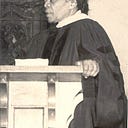History 101: Sedalia School
In this series, History 101, we’ll explore some of the topics and questions we frequently discuss at the Charlotte Hawkins Brown Museum.
Before the founding of Palmer Memorial Institute by Dr. Charlotte Hawkins Brown in 1902, the children of the Sedalia community had attended a mission school in the Bethany Congregational Church. Reverend M.L. Baldwin served as both the principal and minister for the local black community.
When the American Missionary Association pulled funding from Bethany Institute, Charlotte Hawkins Brown worked to establish Palmer Memorial Institute, which was the only school for black children in Eastern Guilford County and surrounding areas until 1937. Since students attending Palmer were required to pay tuition, Dr. Brown requested that the Guilford County Board of Education build a public school for the community. In September 1937, Sedalia School was built adjacent to Palmer Memorial Institute.
Mrs. Beatrice Cole was the first principal at Sedalia. The school plant was a brick structure with six classrooms, an auditorium, a multi-purpose room, and principal’s office. It was located on seven acres of land and water was piped from the deep well at Palmer Memorial Institute making it possible to have a central heating system, indoor drinking fountains, and restrooms. The students came from Sedalia, Wadsworth, and McLeansville communities. When Mrs. Cole retired, Sedalia had an enrollment of approximately 200 students.
Mr. W.H. Lanier became the second principal in 1953. During his administration, a vocational-agricultural building, a gymnasium-cafeteria, a four-room primary building, a library, and two additional classrooms were built.
By 1963, the enrollment at the school was up to 455 students with 22 teachers and 3 teacher aides under the leadership of Principal Coley Hooker. Because of the Guilford County School systems effort to consolidate and integrate the schools, grades seven through twelve were discontinued by 1968. In 1971, desegregation of Guilford County Schools (17 years after Brown v. Board of Education declared “separate but equal” schools unconstitutional) brought Sedalia school four federally funded Kindergarten classes and it’s first white teacher, Wallace Waynick.
In July of 1982, the original building at Sedalia was demolished to make way for the construction of seven new classrooms and an office complex. This structure completed in 1985 connected the two remaining classroom buildings. The vocational agricultural building was remodeled to house the Media Center.
Today, Sedalia Elementary School houses students from Kindergarten through the fifth grade. The faculty and staff of the school are important members of the Sedalia community. Every student from the Kindergarten class has an opportunity to visit Dr. Brown’s home, Canary Cottage, during the Christmas holiday. The relationship between Palmer Memorial Institute and Sedalia School remains important to this day.
